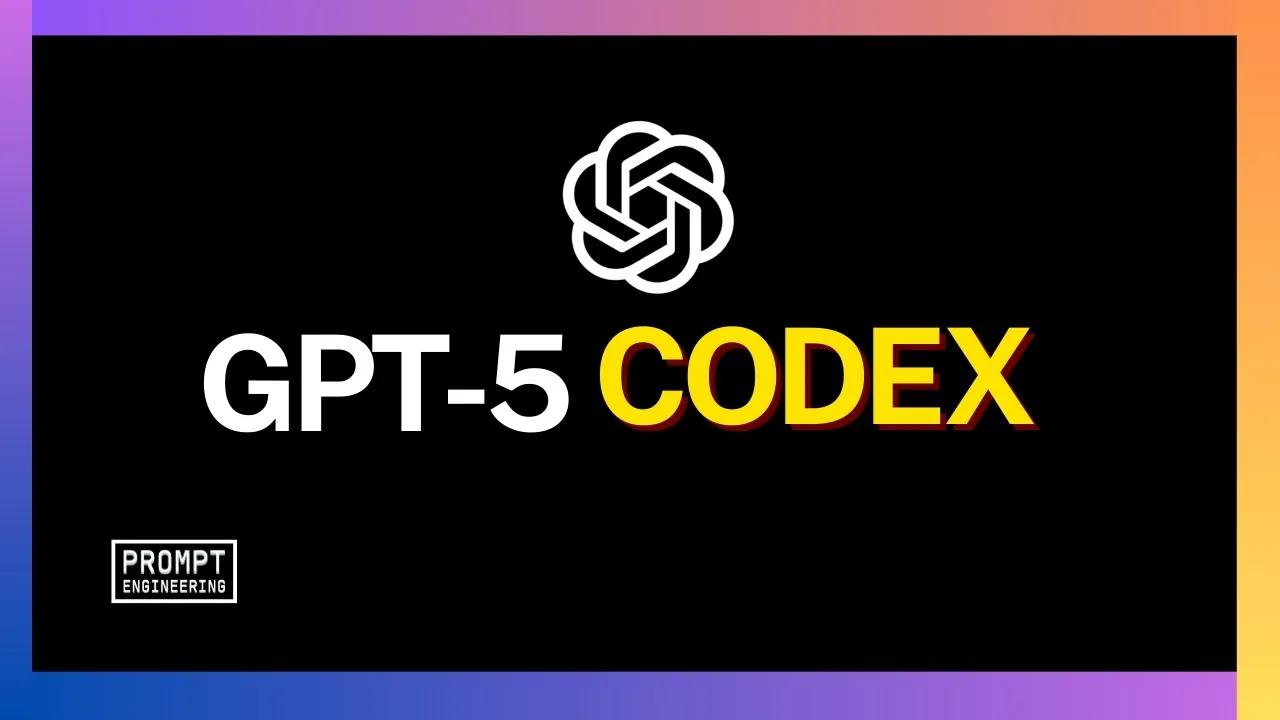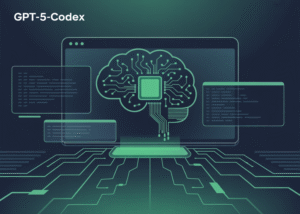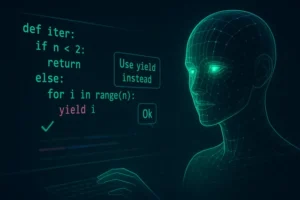OpenAI Introduces GPT-5-Codex: Redefining the Future of AI-Powered Coding
Introduction
The world of programming is evolving faster than ever, and artificial intelligence (AI) is at the forefront of this revolution. OpenAI, a global leader in AI innovation, has just announced GPT-5-Codex, the latest iteration of its groundbreaking AI coding assistant. Building upon the foundation of Codex and GPT-4-powered coding models, GPT-5-Codex is designed to be smarter, faster, and more capable than any AI coding tool before it.
But what makes GPT-5-Codex different from its predecessors? Why are developers, enterprises, and researchers calling it a game-changer for the software industry?
This article takes a deep dive into the features, improvements, real-world applications, and future implications of OpenAI’s newest coding marvel.
The Evolution of AI-Powered Coding
To understand the significance of GPT-5-Codex, we need to look at how far AI coding assistants have come.
-
GPT-3 Codex (2021): The first widely available AI capable of generating code in multiple programming languages. It powered GitHub Copilot and changed how developers approached routine coding.
-
GPT-4 Turbo & Copilot X (2023–2024): Smarter natural language understanding, better context handling, and integration into IDEs made AI assistance more interactive.
-
GPT-5-Codex (2025): A paradigm shift — introducing advanced reasoning, debugging, long-context memory, and enterprise-grade scalability.
With each leap, AI coding assistants have transitioned from autocomplete tools to autonomous co-programmers. GPT-5-Codex cements this evolution by acting not just as a helper but as a full-fledged coding partner.
Key Features of GPT-5-Codex
1. Multimodal Coding Understanding
Unlike earlier models, GPT-5-Codex can process code, natural language, diagrams, and even screenshots of UI or errors. This means you can show it an image of a bugged interface, and it can generate the code fix.
2. Massive Multilingual Support
While older Codex models supported around 20 programming languages, GPT-5-Codex extends this to over 100 languages, including niche, legacy, and domain-specific ones like COBOL, Rust, R, and Solidity.
3. Ultra-Long Context Window
Developers often struggled with AI models forgetting earlier parts of the project. GPT-5-Codex introduces multi-million token context handling, allowing it to work across entire repositories without losing context.
4. Autonomous Debugging & Testing
The new Codex doesn’t just write code — it tests it, identifies bugs, and suggests optimized fixes. It can even generate unit tests and integration tests automatically.
5. Enterprise-Ready Collaboration
GPT-5-Codex integrates with GitHub, GitLab, Bitbucket, and cloud CI/CD pipelines, enabling teams to use it as a collaborative AI teammate in enterprise development.
6. Natural Language to Deployment
Developers can now say:
“Build me a REST API for a to-do app, deploy it on AWS, and connect it to a React frontend.”
GPT-5-Codex doesn’t just generate the code — it deploys, configures, and tests the app automatically.
How GPT-5-Codex Works
At its core, GPT-5-Codex combines:
-
Large Language Model (LLM) advancements from GPT-5 with improved reasoning and contextual memory.
-
Code-specific training on billions of lines of open-source and enterprise code.
-
Reinforcement learning with human and AI feedback (RLHF + RLAIF) for better coding style and bug-free outputs.
-
Integration APIs for IDEs, cloud platforms, and DevOps tools.
Its architecture allows multi-agent collaboration, meaning GPT-5-Codex can simulate an entire developer team — one agent handling backend, another focusing on UI, and another running automated tests.
Real-World Use Cases
1. Startups and Solo Developers
A single founder can now build full-stack applications in days instead of months. GPT-5-Codex reduces the learning curve, enabling non-programmers to build functional apps.
2. Enterprise Automation
Companies can offload legacy code modernization (like COBOL → Python) to GPT-5-Codex, saving millions in migration costs.
3. Cybersecurity & Compliance
The model can scan codebases for vulnerabilities, suggest fixes, and ensure compliance with GDPR, HIPAA, and financial regulations.
4. Education and Learning
Students can learn coding interactively with GPT-5-Codex acting as a 24/7 tutor, explaining concepts, debugging their work, and suggesting best practices.
5. Game Development
Developers can design complex gaming systems, generate assets through multimodal AI integration, and reduce prototyping time drastically.
Advantages Over Previous Models
| Feature | GPT-3 Codex | GPT-4 Turbo | GPT-5-Codex |
|---|---|---|---|
| Supported Languages | 20+ | 50+ | 100+ |
| Context Handling | Few hundred lines | 100k tokens | Multi-million tokens |
| Debugging | Minimal | Assisted debugging | Autonomous debugging |
| Deployment | Not available | Limited integration | Full-stack deployment |
| Multimodal Input | Text-only | Text + partial vision | Text + vision + diagrams + screenshots |
Clearly, GPT-5-Codex isn’t just an upgrade — it’s a fundamental transformation of how coding is done.
Challenges and Limitations
Despite its power, GPT-5-Codex faces challenges:
-
Overreliance on AI – Developers may lose touch with fundamental programming skills.
-
Security Risks – If misused, Codex could accelerate malware creation.
-
Bias in Training Data – Like all LLMs, it may inherit biases from its dataset.
-
Cost of Compute – Running GPT-5-Codex for large projects requires significant infrastructure.
-
Ethical Boundaries – Should AI be allowed to write mission-critical software without human review?
OpenAI has introduced safeguards, but the debate around trusting AI with full autonomy in software development continues.
The Impact on Developers and the Job Market
One of the biggest questions: Will GPT-5-Codex replace programmers?
The answer is nuanced. Instead of eliminating developers, GPT-5-Codex is changing their roles:
-
Routine coding → Automated by AI
-
Problem-solving & system design → Human + AI collaboration
-
Debugging → AI-driven first draft, human-reviewed
-
Software architecture & creative design → Largely human-led
Much like calculators didn’t eliminate mathematicians, GPT-5-Codex will amplify human productivity rather than replace it entirely.
Industry Reactions
-
GitHub: Integrating GPT-5-Codex into Copilot Enterprise, offering team-wide coding intelligence.
-
Google & Meta: Rushing to improve their coding AIs (Gemini Code and Code LLaMA).
-
Startups: Building no-code/low-code platforms powered by Codex APIs.
-
Enterprises: Testing GPT-5-Codex for faster software delivery pipelines.
The general sentiment? Excitement mixed with caution.
Future Outlook
With GPT-5-Codex, OpenAI has set the stage for a new era of AI-driven development. Some predictions for the near future:
-
AI-First Companies: Startups where AI handles 70% of code production.
-
Self-Updating Software: Apps that maintain and patch themselves with AI.
-
AI Development Teams: Companies hiring fewer human developers but supplementing with AI coding agents.
-
Universal Coding Literacy: Non-programmers leveraging natural language to create apps, reducing the global coding barrier.
Conclusion
GPT-5-Codex is not just an AI tool — it’s a paradigm shift in software development.
By combining multimodal intelligence, long-context reasoning, autonomous debugging, and enterprise scalability, it has redefined what’s possible in coding. While it raises concerns about overreliance, ethics, and job displacement, its potential to democratize software creation and accelerate innovation is undeniable.
OpenAI has once again positioned itself at the heart of the AI revolution, and GPT-5-Codex may well be remembered as the tool that reshaped the future of programming forever.
For quick updates, follow our whatsapp channel –
https://whatsapp.com/channel/0029VbAabEC11ulGy0ZwRi3j
https://bitsofall.com/https-yourdomain-com-google-ai-introduces-agent-payments-protocol-ap2/
MoonshotAI Released Checkpoint-Engine: Fast, Lightweight Middleware to Update LLM Weights
Google AI Ships TimesFM-2.5: A Smaller, Faster, Longer-Context Foundation Model for Forecasting







